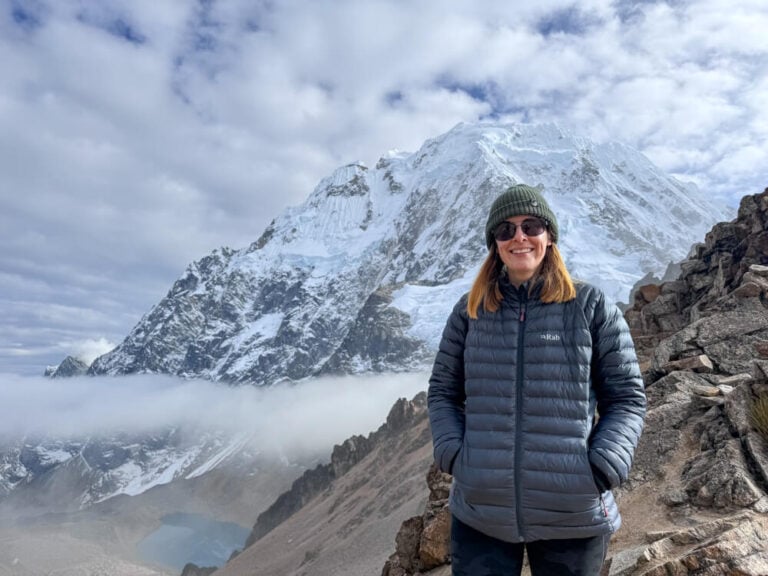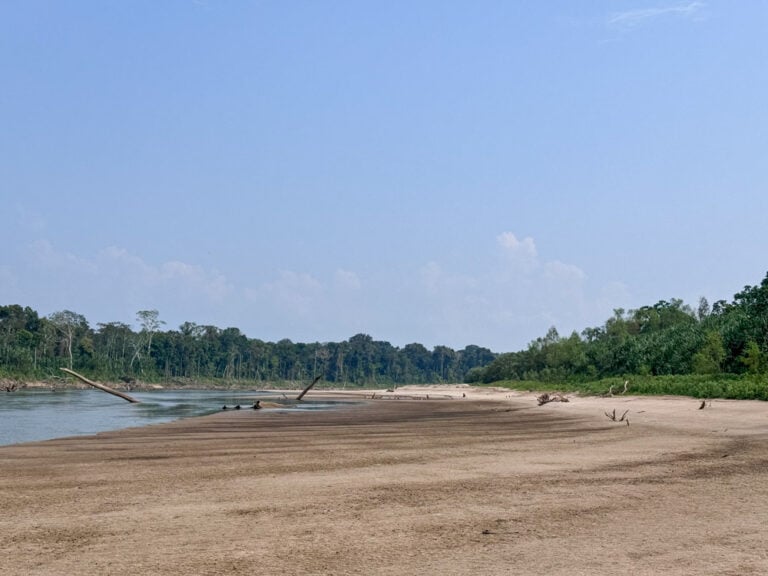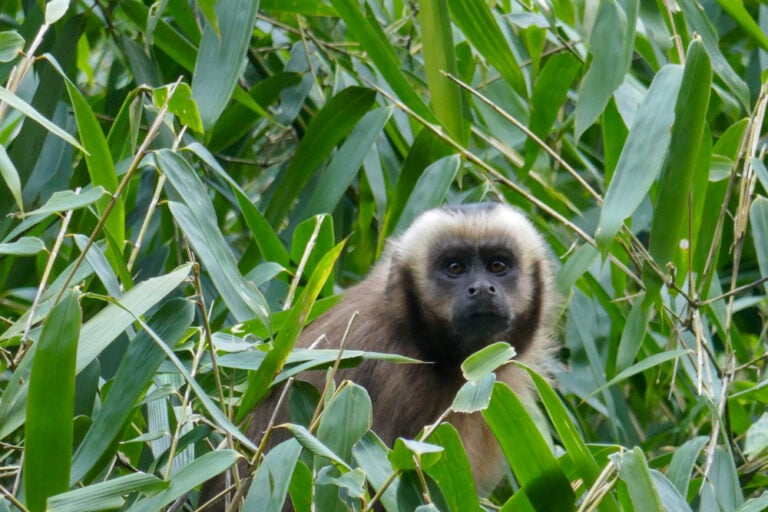Peru in Winter: What to Expect & Important Things to Know
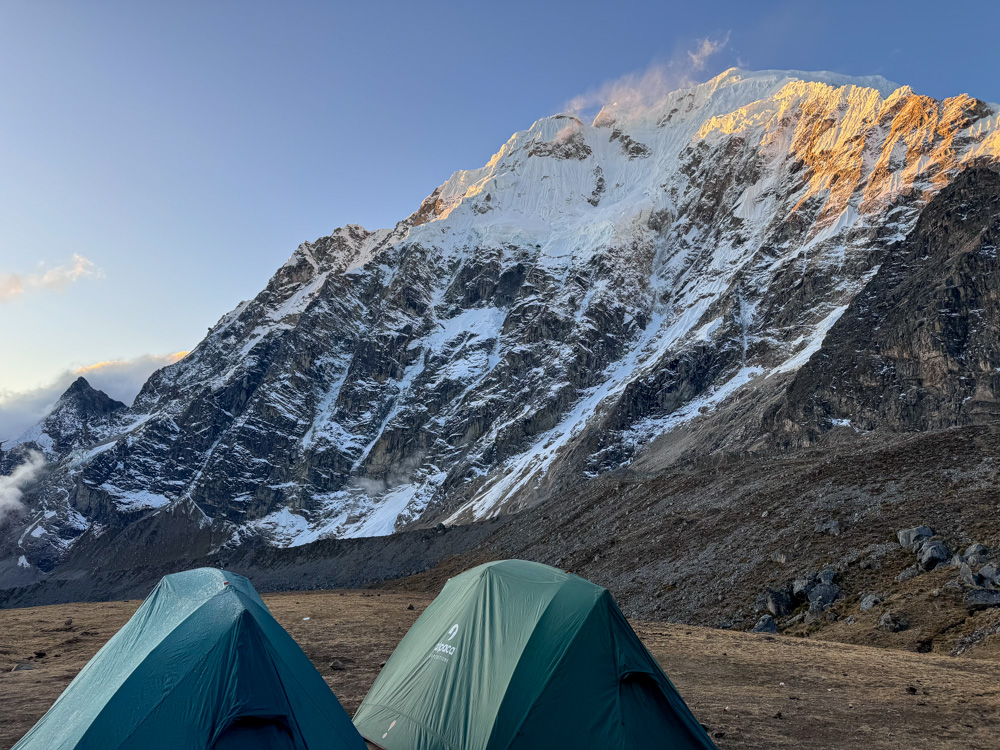
Visiting Peru was a lifelong dream of mine, and choosing the right time of year was an important consideration. I did extensive research to find out the best time to visit, and ultimately, I decided on a winter trip.
Thanks to clear skies, minimal rainfall, and cooler temperatures, winter is a great time to go hiking in Peru, which was the main purpose of my trip. As Peru is in the Southern Hemisphere, the seasons are the opposite of what most of us will be familiar with, and winter is between June and August.
In the end, I’m very happy that I chose a winter trip to Peru. It’s the ideal time to explore the Andes Region and the Amazon Rainforest. I was also rewarded with the best weather I could have asked for at Machu Picchu and had clear views of the site from the Sun Gate.
In this post, I’ve shared everything you need to know about visiting Peru in winter. While it might be the ideal time to visit Machu Picchu and hit one of the many epic hiking trails, it does require some planning and preparation.
When is the best time to visit Peru
Peru typically has two seasons—wet (summer) and dry (winter). For most people, winter is the best time to visit Peru. It’s dry, sunny, and cool, making outdoor activities such as hiking and sightseeing much more pleasant. However, winter also draws the largest crowds, which some people will understandably want to avoid.

It’s also important to know that while there are distinct seasons, the weather does vary greatly around the country. While winter in the Andes region might be cold and sunny, the coastal regions and Amazon basin experience different climates.
Here’s a quick overview of each of the seasons.
The winter / dry season (June, July and August)
Winter is Peru’s peak season, and it’s when the country sees the biggest crowds. The weather is generally cooler, and days are sunny with minimal clouds or rain.
In the Andes region, daytime temperatures range between 15°C and 18°C (59°F and 64°F), but can go much lower depending on your altitude. At night, they can drop well below freezing. However, the weather does vary greatly around the country.
Coastal regions: Peru’s coastal areas tend to stay mild throughout the year. This includes the capital city of Lima and northern regions such as Mancora. Temperatures can reach 24°C (75°F), and humidity tends to be high. While northern areas experience sunny days, Lima experiences something called Garúa, a thick fog that hovers over the city.
The Andes: Winter is, without a doubt, the best time to visit the Andes area of Peru, which includes Cusco, Lake Titicaca, and Huaraz in the north. The dry weather and cooler temperatures are perfect for hiking and mean you’re likely (but never guaranteed) to have clear views of the famous Machu Picchu. Just be prepared for some cold nights.
The Amazon: The Amazon stays hot and mild all year. While the ‘winter’ months see less rain, there can still be rain showers at any time of year. However, the dry season tends to be the best time to visit the Peruvian Amazon. The trails are mostly accessible, and wildlife viewing is at its best.
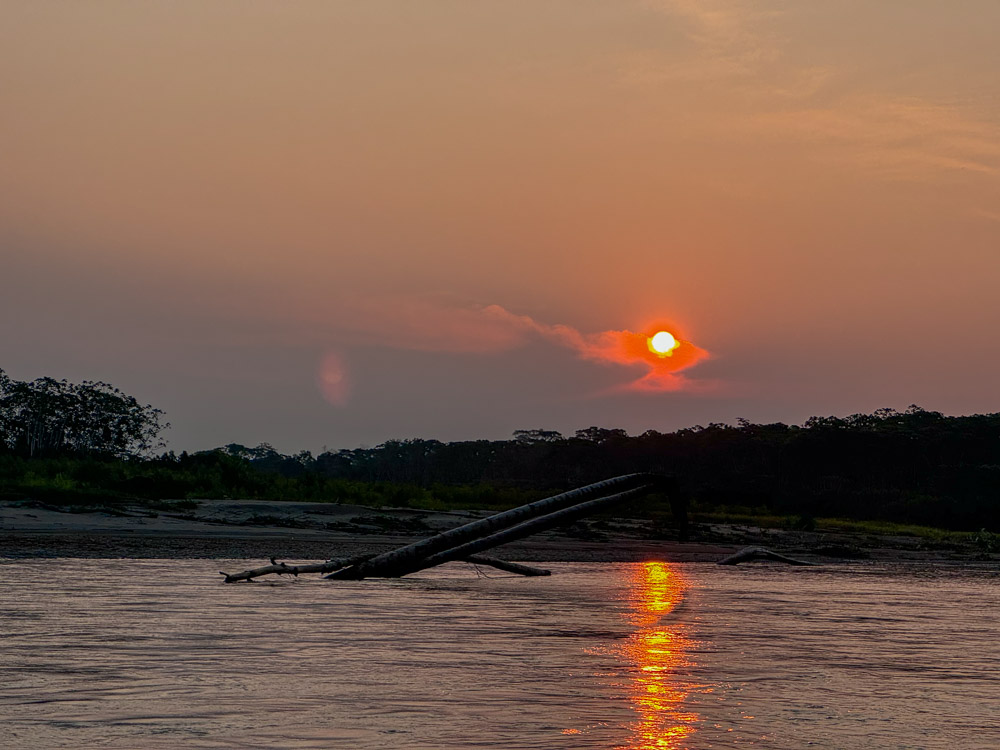
The summer / rainy season (December to March)
Summer in Peru has warm temperatures, which might sound ideal, but it also brings a lot of rain (especially in the Andes Region). Those heading to areas such as Cusco can expect warm, cloudy, and wet days, potentially making sightseeing difficult. Heavy snow can disrupt tours and activities at higher elevations, such as Rainbow Mountain.
While the summer might not be the best time to visit the Cusco and Andes region, it’s a great time to visit Lima and the coastal areas.
Here’s a little more about each of the regions during the summer.
Coastal regions: December to March are the warmest months for the coastal areas. Up in the north, temperatures regularly exceed 28°C/ 82°F. While there can be heavy rains, the warm temperatures make it the ideal time to hit the beach.
The Andes: If your main reason for visiting Peru is hiking, summer might not be the best time. Heavy rain and cloudy days can make hiking more challenging, and scenic views are often covered by fog. Having said that, thousands of people hike during the rainy season and still have a great time. Just be aware that the Inca Trail is closed in February.
The Amazon: You can visit the Amazon at any time of year, even in the wet season. This is when the jungle is at its finest, with the lush greenery putting on a display. Temperatures tend to be high all year round in the Amazon, but they can go a little higher in the summer, reaching 42°C/ 107°F. The downside of visiting in the wet season is that many trails can be inaccessible. It’s also not the best time to see wildlife.
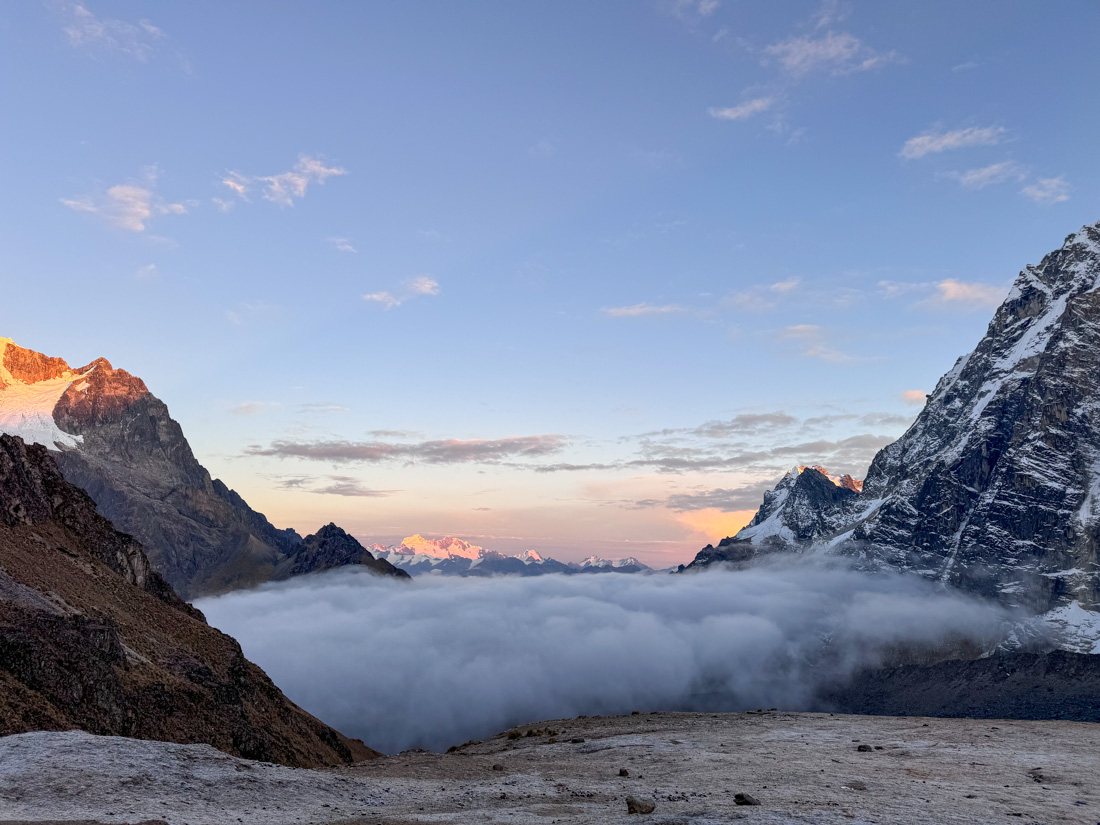
The shoulder seasons (April/May and September/October/November)
If you want to avoid the crowds and the worst of the extreme weather, the shoulder season months are the ideal time to visit. As these months are typically between the main seasons, it can be harder to predict the weather. You may have many rainy days, but you may also be rewarded with incredible clear skies.
10 Things to Know about visiting Peru in the winter
It’s the best time to go hiking
The winter (June to August) is the best time to go hiking in Peru. With clear skies, minimal rain and plenty of sunny weather, there’s no better time to hit Peru’s world-class hiking trails than the winter.
One of the best hikes in Peru is the classic four-day Inca Trail hike. On this hike, you follow in the footsteps of the Incas through cloud forests, over mountains, and past several Inca sites. After four days of hiking, you’ll reach the famous Machu Picchu, one of South America’s most impressive places.
The best time to hike the Inca Trail is in June and July. This is when the weather is at its most optimal for hiking. The days are cooler, the skies are (usually) clear, and fog is minimal. May, August, and September are also great months to go hiking as it doesn’t get quite as cold, but it can sometimes rain. I hiked the Inca Trail in August, and we had a very cloudy and rainy day, but we were spoiled with clear skies for Machu Picchu.
For avid hikers, another epic spot to go hiking in Peru is Huaraz. This up-and-coming hiking destination is home to several hikes, including Laguna 69 and Laguna Paron. It’s also home to the multi-day Huayhuash Trek, which is known as one of the world’s best hikes.
Winter is the best time of year to hike in Huaraz. Although in the northern Andean region, Huaraz follows a weather pattern similar to Cusco. June, July, and August are the coldest months, but with minimal rain, dry trails, and clear skies, it’s a great time to go hiking. In fact, many trails are inaccessible during the summer and rainy seasons.
I visited Huaraz in late August. The rain was just beginning, so there was a big rush to get out on the trails before the heavy rain and snow.
The main downside to hiking in June and July (other than the cold nights) is that it’s a very popular time to visit Peru. This brings me to my next point…

It’s the busiest time of year
Thanks to the nice weather, winter in Peru is the busiest time of year. Tourists from all over the world flock to Cusco to try and experience Machu Picchu at its finest, making it almost impossible to avoid the crowds.
Thankfully, there are limits on the number of people who can hike on the Inca Trail or visit Machu Picchu at any time. In terms of the Inca Trail, there are 500 permits available per day, including permits for guides and porters. The government is currently testing a new system for Machu Picchu and the various circuits available, but overall permits are around 5,600 per day.
Although there are limits on the number of people who can enter the Machu Picchu area, it’s still a very high number, and the crowds can feel overwhelming. I loved visiting Machu Picchu, but there were thousands of people doing the same. My friend who visited in April had a much more pleasant experience in terms of the crowds (but they also had a lot more rain).
Important note: If you want to visit Machu Picchu or hike the Inca Trail in the winter, you must book your permits months in advance. I met several backpackers turning up with no plan, and they missed out on some of the things they wanted to do.
Winter is also popular for other places in Peru, including Rainbow Mountain, Arequipa and Huacachina. If you want to visit Peru during the winter, you need to brace yourself for crowds.
You need to plan ahead
If you’re visiting Peru in winter, it’s essential to plan ahead. Permits for the likes of Machu Picchu and the Inca Trail can sell out months and months in advance.
I booked my Inca Trail permit in March to complete it in August. My tour company told me I had managed to get one of the last permits available. Due to Peru’s increasing popularity with travellers, the permits are selling out even further in advance each year.
It’s not just the Inca Trail and Machu Picchu that sell out ahead in the winter. You’ll also need to keep an eye on hotel availability and other hikes, such as the Salkantay and Colca Canyon. I found that transport, especially buses, also sold out quite far in advance. If you’re using Peru Hop to get around Peru, the popular routes were often sold out for days at a time, making last-minute changes impossible.
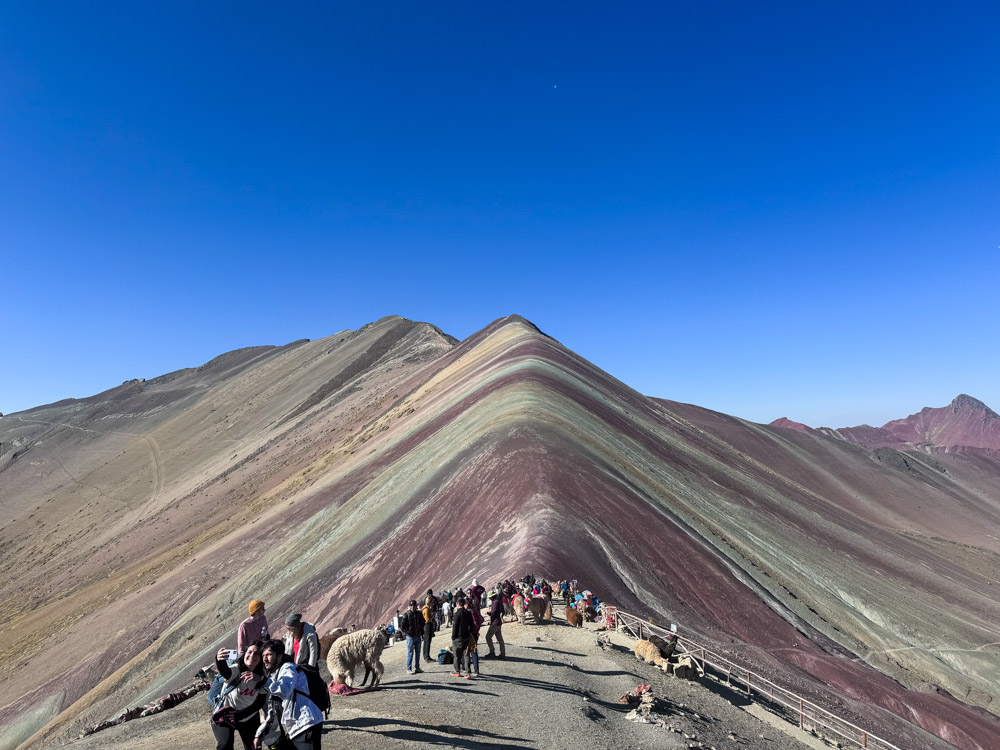
It can get very cold
Peru is a very diverse country, and the weather dramatically differs around the country. For example, the Amazon Basin area has a hot and humid climate all year, while the Andean Mountains Region experiences colder winters.
Side note: If you ever want a shock to the system, go from camping below freezing to the hot and humid Amazon Jungle in the space of a few days. It was an experience…
For most people visiting Peru, a trip to higher altitudes is almost guaranteed (unless you plan to skip out on some of the key sites). This means facing cold temperatures during the winter, especially at night.
June and July are typically the coldest months. While daytime temperatures can range between 15°C and 18°C (59°F and 64°F) in Cusco (but it’s not uncommon for them to drop much lower), it often drops below freezing at night.
If you plan to do any popular hikes, you’ll go to elevations well above 4,000 metres, so expect even colder daytime and nighttime temperatures. On the Salkantay Trek, one night, it dropped to -10°C. I woke up to icicles inside of my tent.
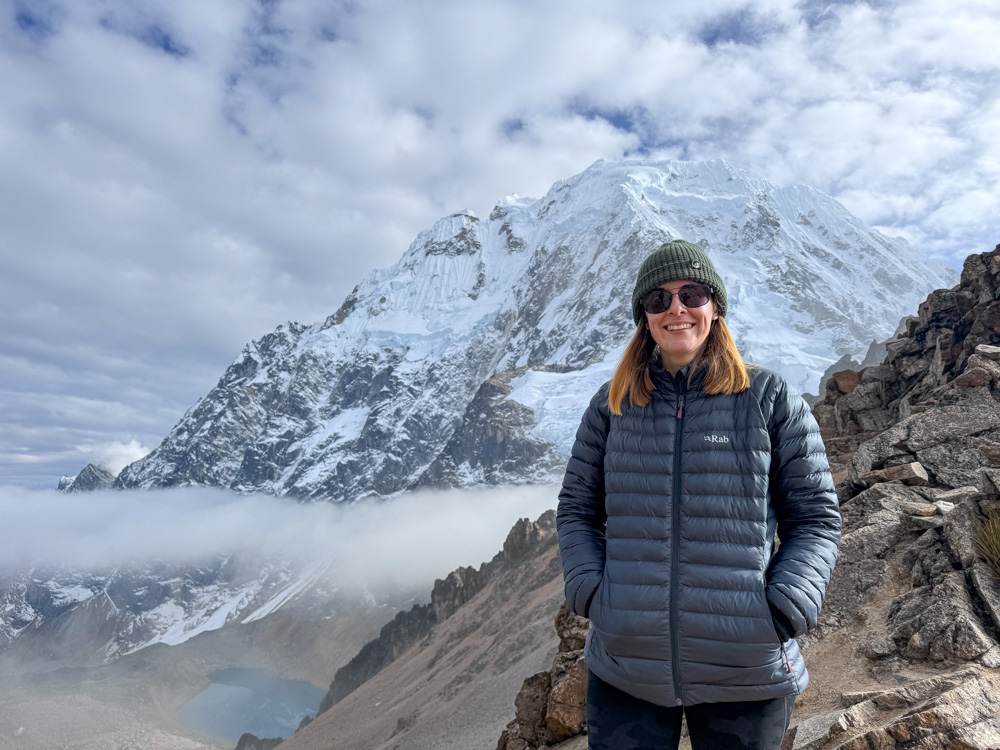
Many hotels don’t have heating
Many of the hotels in Peru don’t have any heating, which is particularly an issue for those visiting higher elevations, such as Cusco or Lake Titicaca. It’s not uncommon for the temperature to drop below freezing, and the traditional stone buildings aren’t exactly warm.
When choosing my accommodation in Cusco, I saw countless reviews from people who complained that it was too cold at night. Unfortunately, most hotels in Cusco don’t have heating. The Andean people are very much used to cold weather, and they’ve adapted over the years by wearing warm clothes. Most cheaper hotels also can’t afford to run heaters throughout the night.
However, most hotels and hostels will provide you with extra blankets to help keep you toasty. I even heard of a few that brought you a hot water bottle at night to help keep you warm.
I personally didn’t find it too much of an issue. The hostel I stayed in had thick duvets and extra blankets. However, if you struggle with the cold, pack some warm clothes to sleep in.
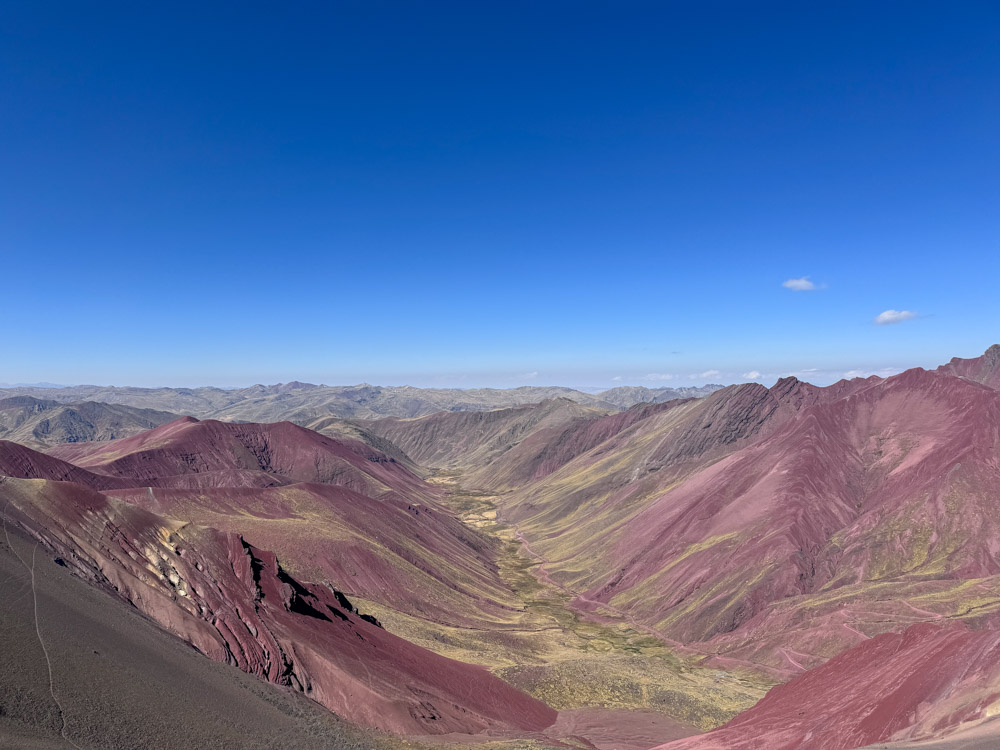
You can still visit the beaches
I’ve spoken a lot about how cold it is in Peru during the winter, but it’s important to note that Peru has many different regions with varying climates. While the winter months are cold for the Andean Highlands, there are still mild temperatures elsewhere in the country.
This is particularly true for Peru’s coastal areas, which experience warm temperatures throughout the year. In Peru’s north, the famous beach town of Mancora can see temperatures above 24°C (75°F) even in the winter. This makes it ideal for those who want some beach time without the extreme temperatures.
The Mancora area also experiences sunny days during the winter, and with little rain expected, it’s the perfect time to visit.
For those heading to the beaches of Lima, be aware that the capital city of Peru has its own mini-climate. The temperatures don’t drop anywhere near as low as in the Highlands, but they’re still slightly cooler than in the summer. While it rarely rains in winter, the city experiences Garúa, a thick fog that rolls in from the Pacific Ocean. This can make the temperature feel cooler and more humid.
It’s a great time to see wildlife
The winter in Peru is a GREAT time to see wildlife. In fact, it’s the best time of year. For the best chances of seeing a range of wildlife, consider visiting the Peruvian Amazon, one of the most biodiverse regions on Earth. Thanks to minimal rainfall and accessible trails, May to October (Peru’s winter) are the best months to embark on a Peruvian jungle expedition.
There are several options for visiting the Amazon in Peru. However, if you want the best chance of seeing as much wildlife as possible, choose Manu National Park. The Manu region is known for being incredibly bio-diverse, and it’s home to several species of monkeys, rare birds and even Jaguars.
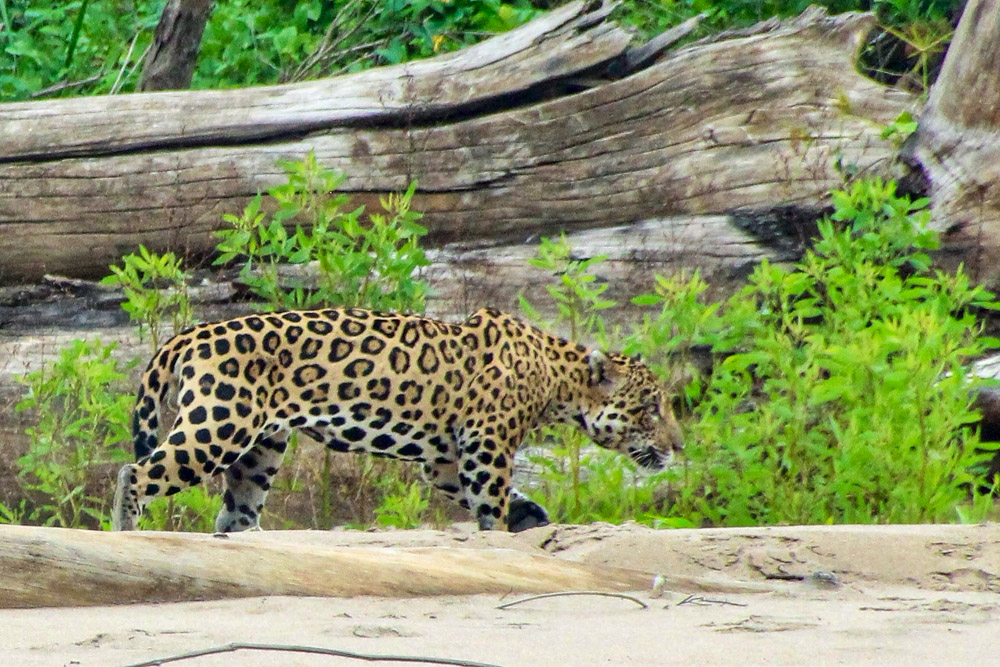
During the dry season, Jaguar sightings increase so dramatically that it’s known as “Jaguar season”. If you want to see Jaguars, be sure to book a trip to the Manu Reserve rather than the Cultural Zone. The Cultural Zone does not go as deep into the park, and Jaguar sightings are rare.
Peru’s winter and spring are also a great time to go whale watching in Peru. Between July and October, the waters of Peru see thousands of Humpback Whales give birth and feed before heading back to cooler waters.
Northern Peru is the best place to go whale watching, especially around the Mancora area. Thanks to the Humboldt Current, the waters are rich in nutrients and attract a variety of marine life.
There are important public holidays
During the winter, Peru has several significant public holidays. While it’s a fantastic experience to see the locals celebrating their past, culture and freedom, it also means lots of crowds and local tourists.
I was in Cusco on 28th July for Independence Day. There were festivities all around the city, fireworks going off all day long, and parties on every street. It was an incredible experience, and I feel very lucky that I got to see it.
Another key public holiday is Inti Raym, also known as the Feast of the Sun. It takes place on 24th June and is an ancient celebration that the Inca Empire has celebrated for hundreds of years. It’s a sacred day in Peru, and archaeological sites such as Machu Picchu and the Sacred Valley will be incredibly busy with locals and festivities.
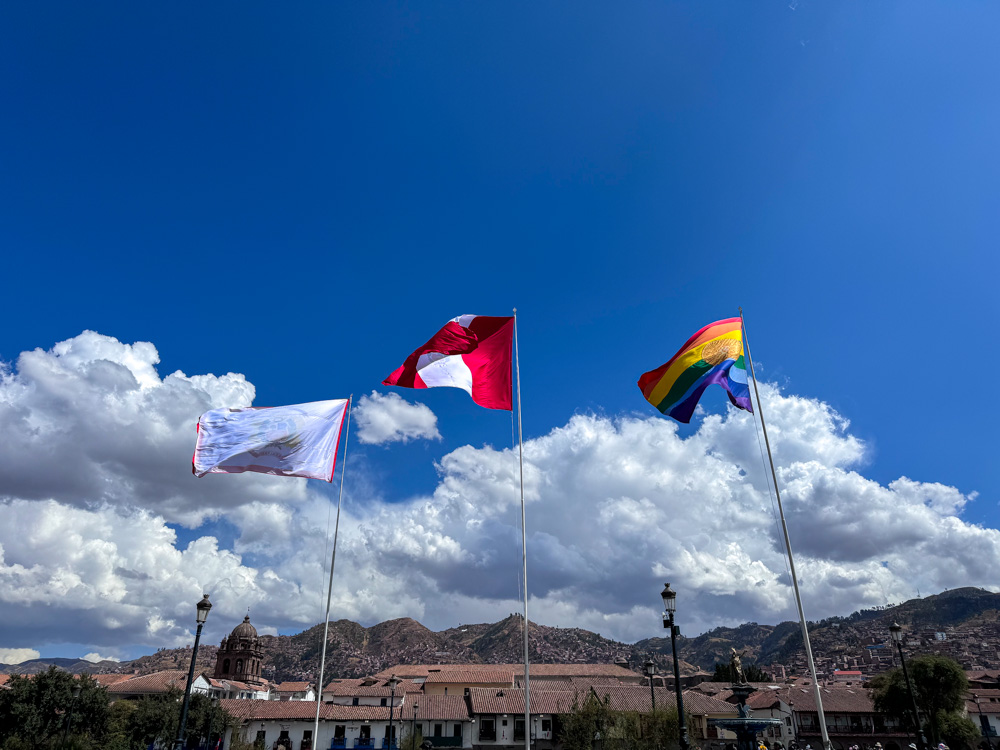
Be prepared for all weather
Peru’s weather can be very unpredictable, especially in the Andes Mountains. On one day of the Salkantay Trek, it went from bright sunshine and warm temperatures to a freezing-cold blizzard in just a few hours. It’s a good idea to expect any weather to ensure you’re prepared.
Moreover, while Peru has distinct main seasons, weather conditions can still vary greatly around the country. For example, if you’re hiking the Inca Trail in July, you can expect freezing temperatures at night. But just a few hour’s drive away in Manu National Park, it will be hot with high humidity.
The same goes for places in Peru’s coastal regions, such as Mancora and Piura. The weather tends to stay quite mild, and you certainly won’t need to wear as many layers as in Cusco.
It can be more expensive
Winter is the high season in Peru. This means bigger crowds and more demand, ultimately leading to higher prices.
Hotels, hostels, tours and transport tend to be more expensive during the winter, especially in the Cusco region. Tour operators don’t need to offer cheaper prices to fill their tours, and you sometimes pay a premium.
Hotels aside, I don’t think the tour prices differ massively between the summer and winter. However, if you’re on a tight budget, you may want to avoid June, July and August. It’s also often cheaper to book tours once you arrive in Cusco (Inca Trail and Machu Picchu aside). You may need to be more flexible with timings, though.
What to pack for winter in Peru
With all the different climates, packing for a winter trip to Peru can be a bit of a headache, especially if you plan to explore different areas of the country and take on one of the big hikes.
Here are just a few of the essential items to consider when packing for a winter trip:
- Warm layers: If you’re going to high altitude in an area such as Cusco or Huaraz, you’ll want some warm layers (especially for the nights). You may also want to consider thermals for big hikes, such as the Inca Trail (it can get freezing at night).
- Daytime clothes for warmer weather: While the nights are cold, the daytime can still be warm in Cusco (and other parts of the country). I was so hot walking around Machu Picchu. There were also days in Cusco where I just wore a thin layer. Once the sun is up, the temperature really warms up.
- Clothes for hot weather: If you’re visiting the Amazon or the Peruvian Coast, you’ll want some clothes for high temperatures. I’ve written all about what to pack for visiting the Amazon here to help.
- Warm jacket: The nights tend to be cool around the country, especially at the higher elevations. Make sure you have a warm coat to wear at night.
- Waterproofs: While the winter in Peru is the driest time of year, it can still rain. Although I visited in the winter, I still experienced rain several times. I recommend taking a waterproof coat just in case.
- Sun protection: Even in the winter, the sun can be very powerful, especially in the mountains. Don’t let the cool weather fool you. Ensure you have plenty of sun protection, such as SPF and a cap.
- Gloves and a hat: Don’t forget those items to help keep your hands and head warm.

Summary: Is visiting Peru in the winter a good idea?
For most people, the winter months are the best time of year to visit Peru. The weather tends to be dry around the country, the temperatures are cooler, and there are endless sunny days with minimal rain.
However, the cold nights and busy crowds can put some people off from visiting in the winter. If you prefer to avoid the crowds and aren’t overly worried about Machu Picchu or doing any hiking, a visit in the low season may be a better option.
Here’s a quick summary of the pros and cons of each.
Visiting Peru in the summer/wet season
| PROS | CONS |
| It’s quieter and fewer crowds | There can be heavy rain |
| You don’t need to plan ahead as much | Scenic views can be disrupted |
| The temperatures are warmer | Hiking trails may not be accessible |
| It’s a great time for the coastal areas | Transport and tours can be disrupted |
Visiting Peru in the winter/dry season
| PROS | CONS |
| There is minimal rain | There can be lots of crowds |
| Most hiking trails are accessible | Prices can be higher |
| Views at Machu Picchu are likely to be better | Temperatures in the coastal areas are lower |
| There are clear skies | You need to book tours in advance |
I hope you’ve found this article useful. Enjoy your trip to Peru!

